Chapter 15. Chapter 15: Ecosystems and Communities
Review & Rehearse
Review & Rehearse
true
true
You must read each slide, and complete any questions on the slide, in sequence.

Instructions
Review the visual summaries and answer the essay questions below.
Make sure to enter a brief response that completely answers each question and explains your reasoning. When you click "Submit," you will be provided instant feedback, allowing you to check if your response is correct.
(This activity contains 15 total essay questions. Each new question will be revealed once you complete the preceding question.)
Question 15.1


The two elements of an organism’s abiotic environment are: (a) chemical resources, such as soil, water, carbon, nitrogen, and phosphorus; and (b) physical conditions, including factors such as temperature, salt levels, moisture, humidity, sunlight, and air pressure.
Question 15.2
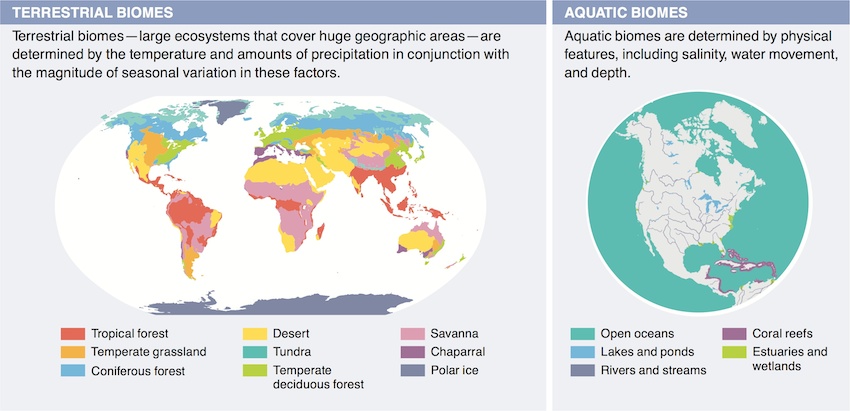
The temperature generally decreases on moving from the equator toward the Poles. The type of biome located in a geographic region is determined by: (a) temperature: average temperature and whether it varies seasonally or is constant; and (b) precipitation: average amount and whether it varies seasonally.
Question 15.3

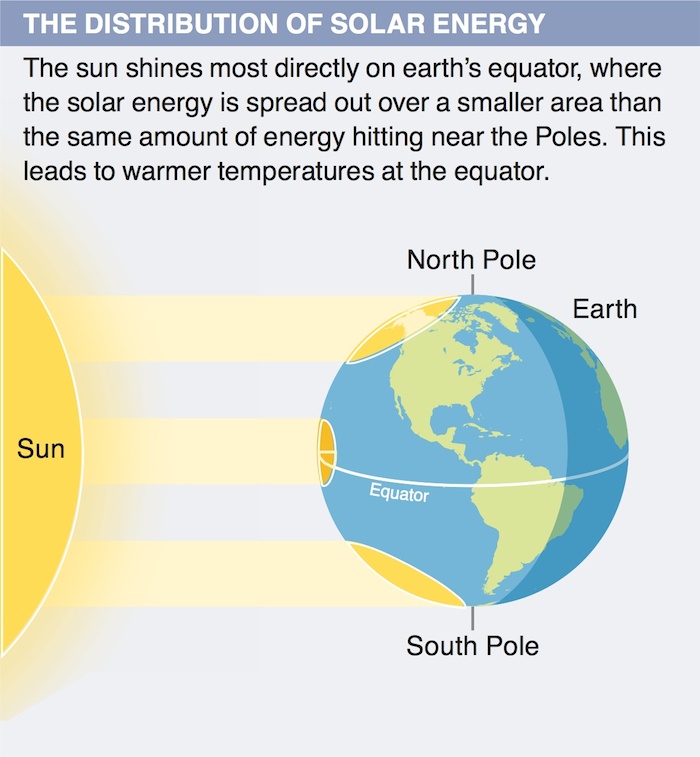
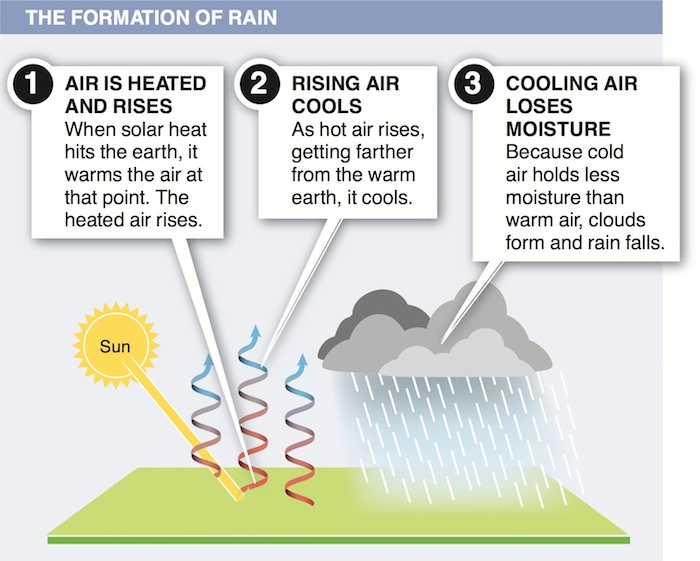
At lower latitudes, closer to the equator, the sun’s rays hit the earth more directly, and the solar energy spreads out over a smaller area (is more concentrated). Closer to the Poles, energy from the sun’s rays is spread out over a greater area, The greater the concentration of sunlight reaching the earth, the higher the temperature.
Question 15.4
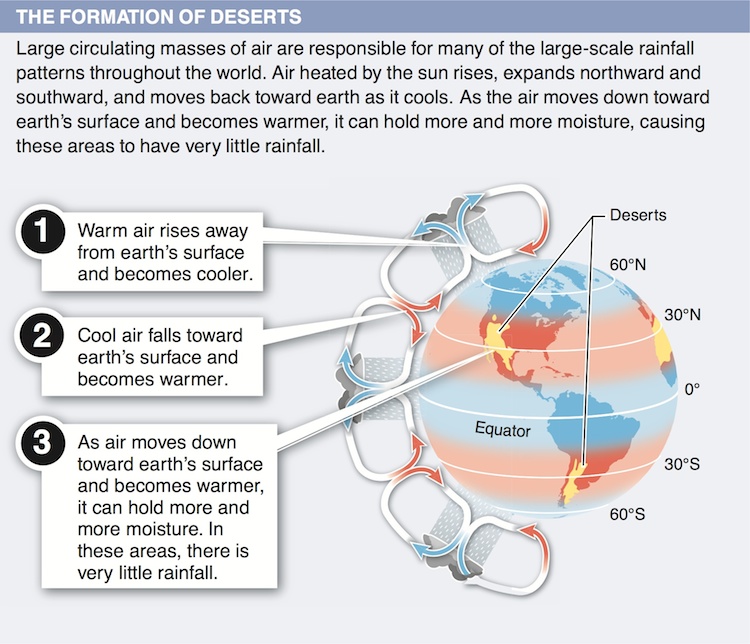

By reducing the amount of solar radiation they absorb, cities can become cooler without the expenditure of energy. Steps that could be taken include: (a) making rooftops lighter in color to reflect sunlight, (b) planting trees and plants around buildings to provide shade and cool areas, and (c) creating rooftop green areas and gardens.
Question 15.5
mX/A9hiSVZ7YukE1XQTJXxDdV28L2w3rK9TZFWLCdYoSohkOo+niBzbJ7A8q8C78GmbE7Yh2OF+oLw8aIkAteE7/L3r4n1EzXTGjA9cQFiyLyz7PqfHzp8+P4rnz6A+COethQZ8kGkZkVYRg0P0DBQ==Winds blow more strongly when they are higher above the earth, freed from the earth’s frictional drag. When strong elevated winds encounter tall buildings, they are deflected, and much of the wind is pushed downward, increasing speed as it reaches street level.
Question 15.6
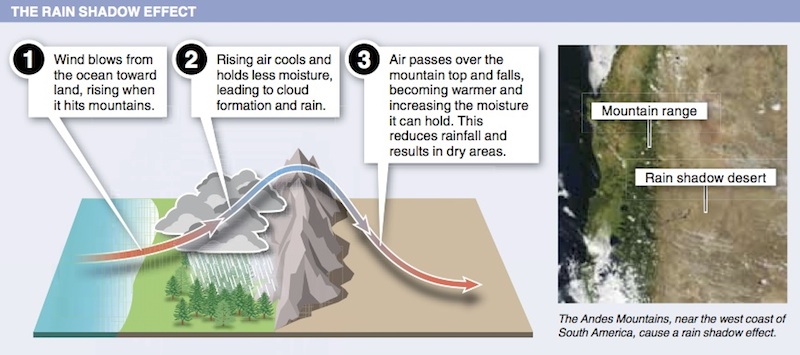
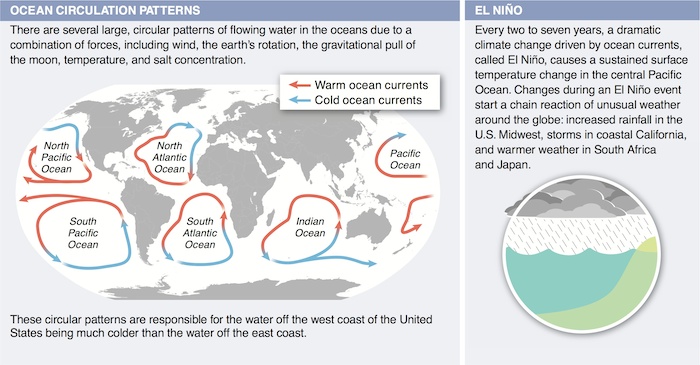

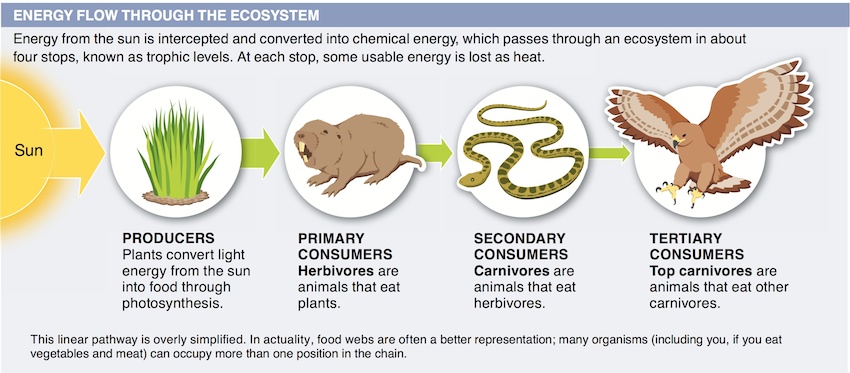
Many organisms are omnivores, which eat both plants and animals and thus can occupy more than one trophic level in a food chain. These multiple connections between organisms, not apparent in a food chain, are better represented by a food web.
Question 15.7

Energy flows from producers to consumers through several levels called trophic levels. Producers, the photosynthesizers, are at the base of the food chain and outnumber all consumers. Primary consumers, the herbivores, feed on the producers. Energy then passes to secondary consumers as they feed on the primary consumers. Finally, at the very top of the food chain are the tertiary consumers: the top carnivores. Only about 10% of the energy at each trophic level is available for consumers at the next higher trophic level. Very little energy originally absorbed by producers is available to top carnivores, so a relatively small number of these animals can be supported.
Question 15.8
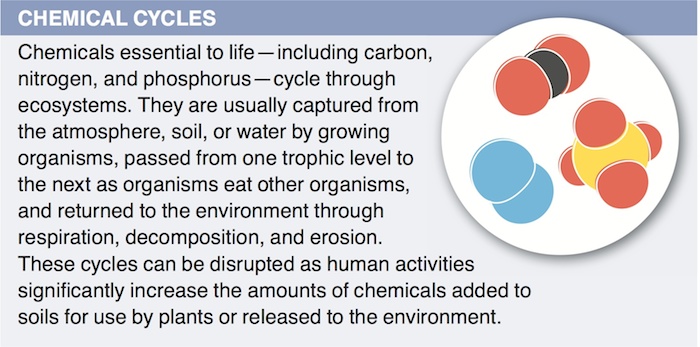
Carbon dioxide levels reflect fluctuations in plant growth during different seasons. Photosynthetic rates decrease during the winter, resulting in higher atmospheric carbon dioxide levels. The carbon dioxide levels decrease during the summer as photosynthetic levels increase.
Question 15.9


Natural selection selects for characteristics that improve reproductive success, regardless of whether the trait evolves in response to the selective pressure of physical resources or of biotic resources. For instance, an animal may develop a thick fur coat in response to cold temperatures and develop a light-colored coat to improve camouflage as a defense against predators. Evolution of a thick fur coat is in response to an abiotic resource; camouflage is in response to biotic resources.
Question 15.10
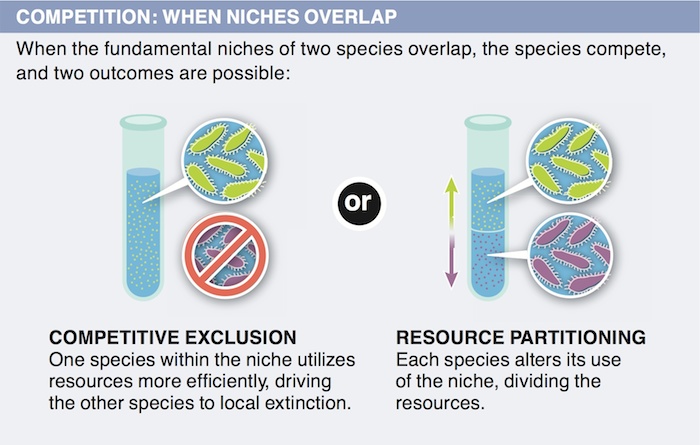
An organism’s niche can be described as its place in a community. The features of a niche include space and food requirements; the time of year the organism reproduces; its temperature, moisture, and other living requirements; the plants or other organisms it feeds on; and how it influences competitors. If two species occupy the same niche, two outcomes are possible. Competitive exclusion occurs when the two species compete until the one that uses resources more efficiently drives the other specie to extinction. Resource partitioning occurs when the two species alter their use of the niche through behavioral or structural changes, so that one or both species become restricted to just part of their niche.
Question 15.11
W2QFBU/04SSB4RQmmj9HSDy21vviHoz4UJYgiTL+zis0rxYi4sW94mL+pnaHf2Fd2jXosx2WkqUS5kovJf3JMSuXknNV63dMLYFwNk+3cH/XndQChKCUYdPsp9MyDkBTtE2EmN6I8ZKhZt8Aq8KQpRULjN+cBXdkSftVSA==
Competitive exclusion: The two species compete until the one that uses resources more efficiently drives the other specie to extinction. Resource partitioning: The two species alter their use of the niche through behavioral or structural changes, so that one or both species become restricted to just part of their niche.
Question 15.12
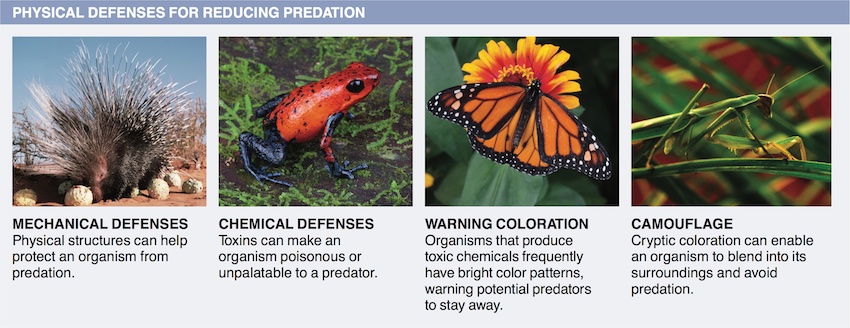
Unlike animals, plants are immobile and unable to move away from danger. They have developed chemical defenses that can injure or kill organisms that try to eat or otherwise harm them.
Question 15.13
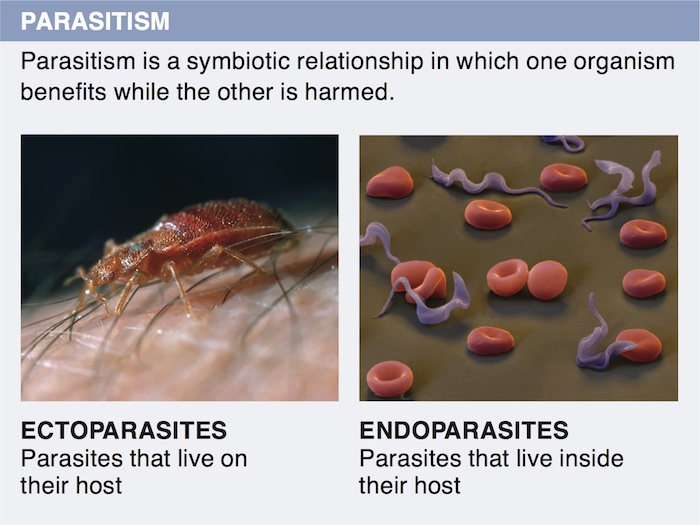
Rabies is spread through the transfer of saliva from one mammal to another. This disease causes an infected animal to become aggressive and to foam at the mouth, which increases the chance of its biting and transferring saliva to another animal.
Question 15.14

Commensalism is a relationship involving one specie that benefits and another specie that neither benefits nor is harmed. In other words, one species is a winner, while the other derives no benefit from the relationship, but does not lose anything either.
Question 15.15

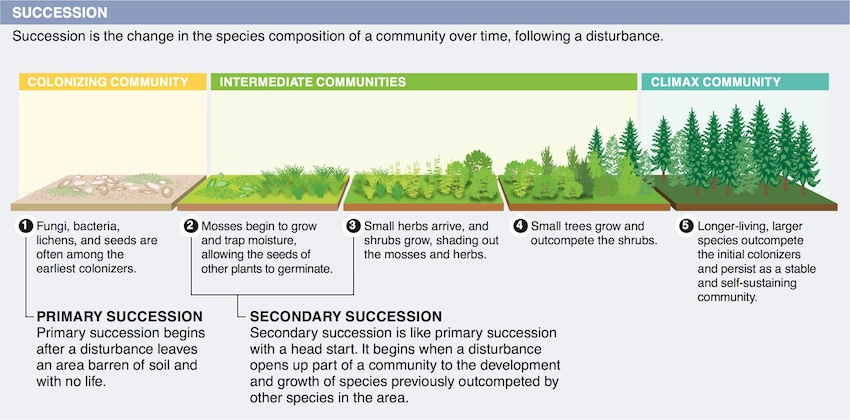
A crucial feature of a colonizer in primary succession is its ability to disperse far from its site of origin. Because of their ability to travel far, these species can reach remote environments that have been disturbed. Generally, they face few if any competitors at first and can flourish, but in later stages of succession they do not compete well with other species.
Activity results are being submitted...